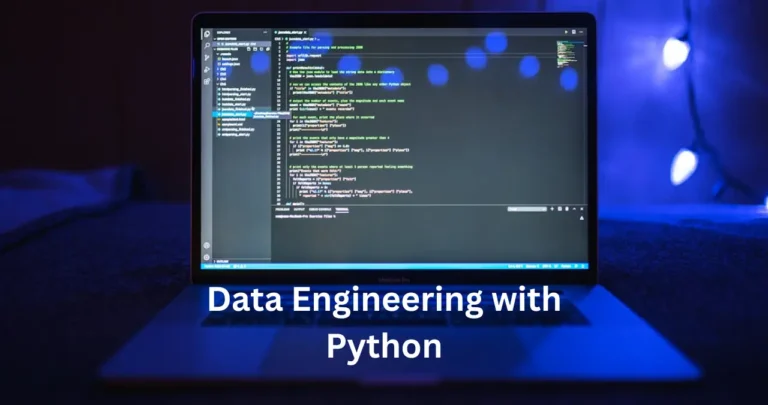The use of big data in healthcare is becoming increasingly important as providers strive to improve patient outcomes, reduce costs, and deliver care that is more personalized and efficient.
By leveraging advanced analytics and machine learning techniques, healthcare providers can gain insights into complex patient data sets, enabling them to predict and prevent disease, identify at-risk patients, and tailor treatments to individual needs.
However, there are also challenges associated with using big data in healthcare, such as data privacy and security concerns, the need for standardized data formats, and a shortage of skilled professionals who can manage and analyze the data effectively.
Despite these challenges, the potential benefits of using big data in healthcare are vast, and the technology is poised to revolutionize the industry in the coming years.
In this article, we will dive deeper into the benefits, challenges and use cases of big data in healthcare and explore how it can be leveraged to transform the delivery of care for patients around the world.
Let’s start with some of the benefits of big data in health care.
The benefits of big data in healthcare
The use of big data in healthcare is revolutionizing the industry by providing data-driven insights that enable better patient outcomes, cost savings, and more efficient care delivery.
Let’s check the benefits in more detail.
Improved patient outcomes
Big data analytics can be used to identify at-risk patients, predict outcomes, and personalize treatments. Imagine a world where physicians can use patient data, such as medical history, family history, lifestyle choices, and even genetic information, to predict the likelihood of certain diseases or conditions.
With this information, physicians can tailor treatment plans to the individual, rather than taking a one-size-fits-all approach. This personalized approach leads to better outcomes, higher patient satisfaction, and reduced costs in the long run.
Cost savings
Big data can be used to reduce waste, optimize resource utilization, and streamline operations. By analyzing patterns and trends in healthcare data, providers can identify areas where costs can be reduced without compromising patient care.
For example, big data analytics can be used to identify high-cost procedures that can be replaced with less expensive alternatives or to optimize staff schedules to reduce overtime and increase productivity.
Efficient care delivery
By identifying best practices, measuring performance, and driving continuous improvement, big data analytics can help providers streamline processes and improve patient flow.
Analyzing patient data can help providers identify bottlenecks in care delivery and take action to reduce wait times and improve the overall patient experience.
You can unlock the potential of big data to revolutionize your healthcare business by investing in healthcare software development.
Challenges and limitations of big data in healthcare
While the benefits of big data in healthcare are impressive, it’s important to acknowledge the challenges and limitations that come with this transformative technology. The use of big data in healthcare is not without its challenges, from privacy concerns to technical limitations.
- One of the biggest challenges of big data in healthcare is privacy. With the abundance of sensitive patient data involved in healthcare, there is a significant risk of data breaches and misuse.
Patients need to trust that their data is being handled securely and ethically. Providers need to ensure that they are following strict data protection regulations and that their data management practices are transparent and secure.
- Another challenge is the sheer volume of data involved. Big data analytics requires a tremendous amount of computing power, storage, and processing capabilities.
Many healthcare organizations may not have the resources or expertise to handle this type of data, leading to technical limitations that can impact the accuracy and effectiveness of data-driven insights.
- Furthermore, data quality is another limitation. The accuracy and completeness of data are essential for successful big data analytics. However, healthcare data is often fragmented, inconsistent, and incomplete.
Without standardized data, it becomes challenging to analyze and draw meaningful insights from it.
- Lastly, there is a limitation in the availability of skilled professionals. With the growing demand for big data analytics in healthcare, there is a shortage of skilled professionals who can manage and analyze the data effectively.
The healthcare industry needs to invest in education and training programs to develop the skills needed to use big data effectively.
Use cases of big data in healthcare
Big data is rapidly transforming the healthcare industry, and its potential use cases are virtually limitless. From predicting disease outbreaks to personalizing treatments, big data analytics is already having a profound impact on how healthcare is delivered.
Here are just a few examples of the many ways big data is being used in healthcare:
Predictive analytics
With big data, healthcare providers can identify at-risk patients and predict outcomes. For example, by analyzing patient data, providers can identify patients who are at a higher risk of developing chronic diseases, such as diabetes or heart disease, and intervene early to prevent or manage the condition.
Personalized medicine
Big data can be used to create personalized treatment plans for patients. By analyzing a patient’s medical history, genetic data, lifestyle choices, and other factors, healthcare providers can tailor treatments to the individual, improving outcomes and reducing costs.
Disease surveillance
Big data can be used to track disease outbreaks and epidemics in real time, allowing healthcare providers to respond quickly and prevent the spread of infectious diseases.
Clinical research
Big data can be used to accelerate clinical research by identifying patient populations for clinical trials and collecting data from electronic health records (EHRs) to support research studies.
Operational efficiency
Big data can be used to optimize resource utilization, reduce waste, and streamline operations. By analyzing patterns and trends in healthcare data, providers can identify areas where costs can be reduced without compromising patient care.
Patient engagement
Big data can be used to improve patient engagement and satisfaction by providing patients with access to their health data and empowering them to take a more active role in their healthcare.
Conclusion
Big data is revolutionizing the healthcare industry by providing insights that were previously unattainable. The benefits of big data in healthcare are numerous, from improving patient outcomes to reducing costs and streamlining operations.
However, it’s important to acknowledge the challenges and limitations that come with this transformative technology, such as data privacy, technical limitations, and data quality.
Despite these obstacles, the potential use cases of big data in healthcare are vast and varied, offering immense opportunities for improving the quality and delivery of care.
As the industry continues to embrace big data, it’s essential to address these challenges and leverage this technology to drive positive change in healthcare.
Read more: Digital Analytics: A Beginner’s Guide




